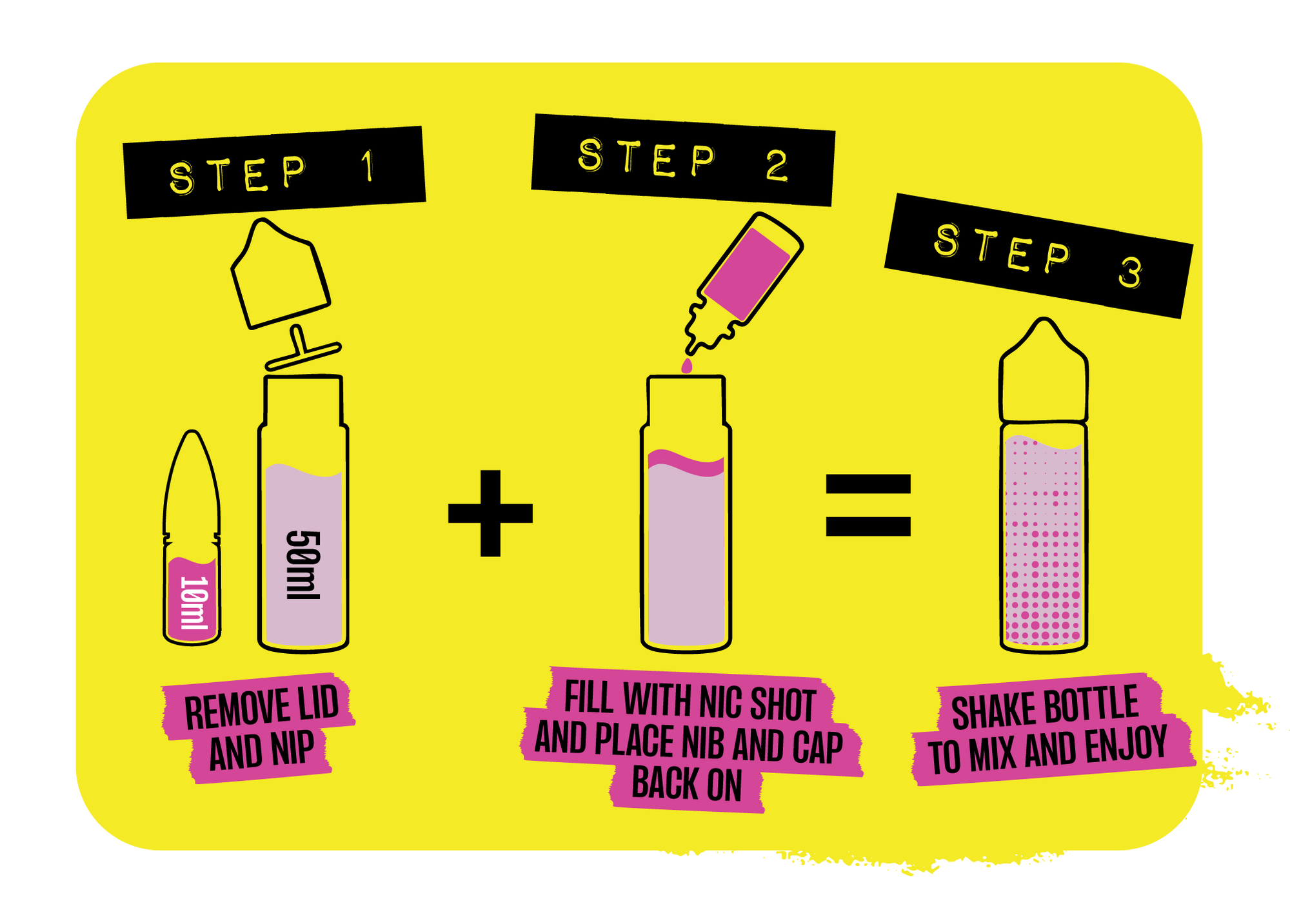

| High VG - e.g. 70/30 or 80/20 VG/PG | High PG e.g. 60/40 or 70/30 PG/VG | 50/50 PG/VG 3 |
|---|---|---|
| High-VG e-liquids are designed for producing large, dense clouds of vapour. The experience is smoother, with a much milder throat hit. The thicker viscosity requires higher-powered vape devices, often with larger coils for more effective vapourising. | E-liquids with a higher concentration of PG offer a stronger throat hit, more akin to cigarette smoking, and give a more intense flavour delivery. The thinner consistency works well in simpler, lower-power devices, as it wicks easily and is less likely to clog small coils. | As you might suspect, this is a balanced half and half ratio that offers a good mix of flavour, throat hit, and vapour production. It’s a versatile option suitable for most standard vape kits and pod systems. |
| 0mg | A no-nicotine vape juice is used for flavour only and mostly used by non-smokers |
|---|---|
| 3mg | This is a very light nicotine option most suited to social smokers or sub-ohm vapers |
| 5mg | Low dose e-liquids like this are best for light smokers or vapers who enjoy a mild hit |
| 10mg | Moderate smokers of up to 10-15 cigarettes a day should opt for a mid-range e-liquid strength |
| 20mg | Heavy smokers (more than 15+ cigarettes daily) often prefer high-strength nic salts for a smooth delivery |
| TOBACCO | Mimicking the taste of cigarettes and ranging from rich, earthy blends to lighter, sweeter variations |
|---|---|
| MENTHOL & MINT | Offering a cool and refreshing sensation, often blended with fruit and favoured by those who like their vape to tingle |
| FRUITS | A vast category, including simple fruit profiles like strawberry or mango, or fruit medleys that mix several tastes together |
| DESSERTS | Covering everything from ice creams to apple pie, favoured by vapers with a sweet tooth |
| BEVERAGES | Recreating popular drinks like cola, lemonade and iced tea for a refreshing e-liquid choice |
What happens to eliquid when you vape?
When you use your vape, the battery sends power to the metal coil. The coil rapidly heats up, and the e-liquid saturated in the surrounding wick is vaporised, turning into an inhalable vapour. This vapour carries the flavour and nicotine from the liquid to your lungs.
Does e-liquid expire?
Yes, e-liquid does have a shelf life, typically around one to two years from the date of manufacture. Over time, the flavour can fade, the nicotine can oxidise, and the overall quality can degrade.
How should I store e-liquid?
To preserve its quality, you should store e-liquid in a cool, dark place away from direct sunlight and heat. Exposure to light, heat, and air can make nicotine and flavourings degrade faster. Always ensure the cap is tightly sealed too.
Can I mix different e-liquids together?
Yes, you can mix different e-liquids, and many vapers enjoy creating their own custom flavour combinations. It is best to mix liquids from the same brand or with similar PG/VG ratios to ensure a consistent result.
Can e-liquid lose its flavour?
E-liquid can lose its flavour and this can happen for a few reasons. If the e-liquid is old or stored improperly, the flavour compounds may break down.
There is also a phenomenon known as "vaper's tongue", where your palate becomes desensitised to a flavour you use frequently. Switching flavours for a few days usually resolves this.













